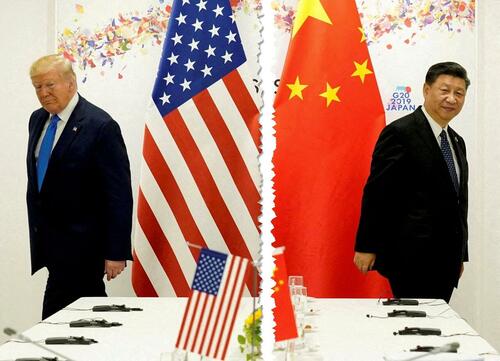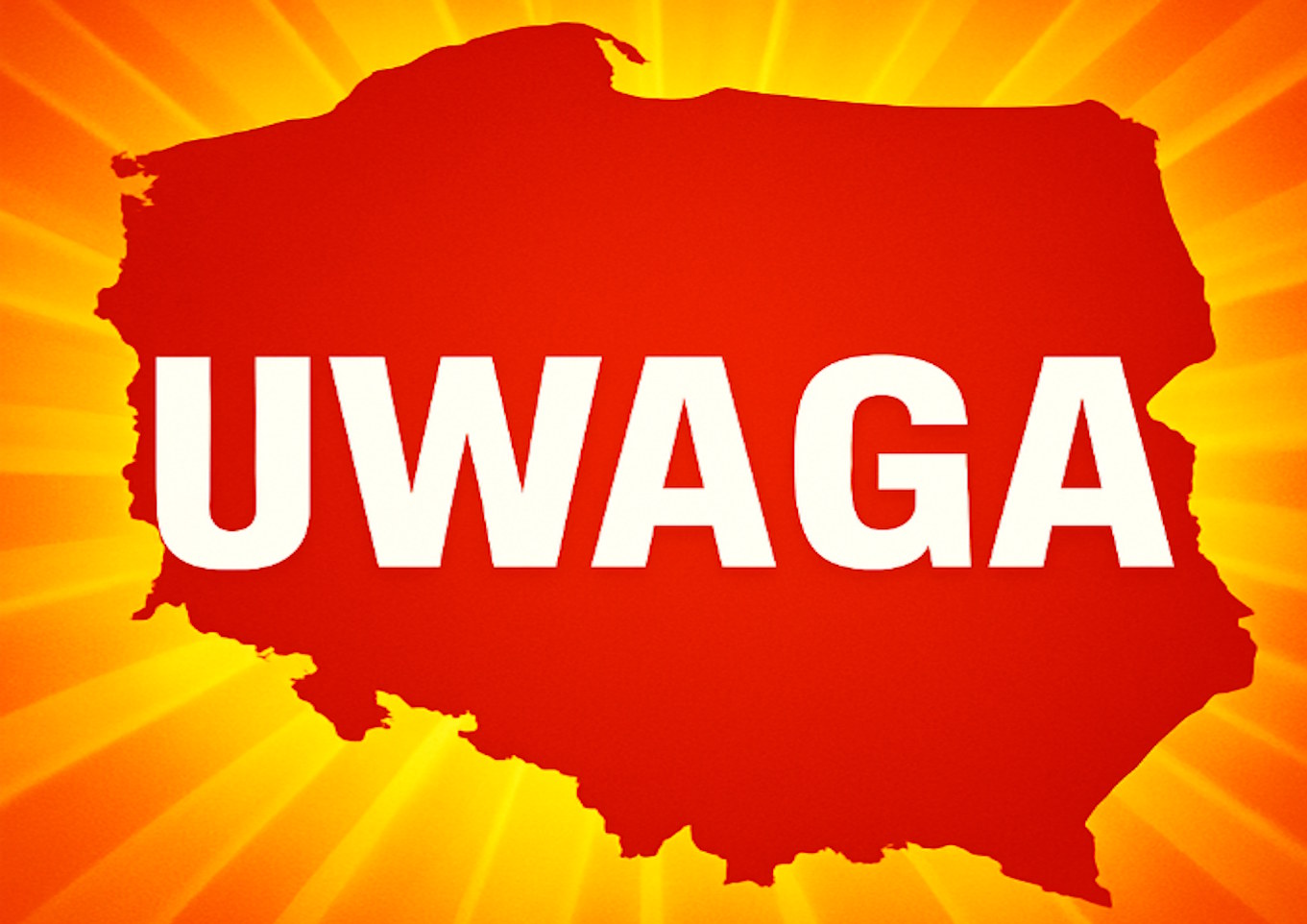
Trade War? Policy Pivot?
By Peter Tchir of Academy Securities
For anyone who has been reading the T-Report for the past few months, you know that we have become increasingly concerned about the administration’s tariff policy and its impact on markets and the economy.

As recently as Thursday on Bloomberg TV, I was bearish on the economy and thought that we had evolved from a Trade War to an Economic War with China. That fits the D.I.M.E. framework for levers of power (Diplomacy, Information, Military, and Economic).
- On Wednesday (it seems like so much longer ago), after the “reciprocal” tariffs went into place (which weren’t actually reciprocal), the administration backed down in two important ways:
- The new “reciprocal” rate would be 10% (much more in line with the weighted average tariffs that the U.S. faces with many countries).
- There would be a 90-day pause, or roll-back, to give time for countries to negotiate.
- China was singled out as not benefiting from either of the above.
We discussed this briefly on Wednesday and in more detail on Thursday morning when we reviewed the Liberation Day Do-Over. The argument was that the pause and reduced rate was good, but probably not good enough to get us back to pre-Rose Garden levels. This also seemed to fit with the escalation of the Trade War to an Economic War with China.
Then, Friday night, we got some major exemptions:
- Chips, smartphones, and a wide variety of primarily tech-related products have been exempted from tariffs. There are some details that I haven’t seen on what products specifically will be exempted. Also, not sure whether the exemption is from the “reciprocal” tariffs, or if other, older tariffs still apply? Weirdly, I’m fine ignoring the details for the moment.
- China was INCLUDED in the exemptions.
The fact that China was included in the exemptions makes this quite powerful indeed. It certainly seems to ratchet down the full Economic War with China (for now).
Had 10% “reciprocal” tariffs, with 90 days to negotiate, and exemptions for vital/expensive tech been excluded from the initial Liberation Day announcement, we probably all could have been saved a lot of time and suffering!
But they weren’t.
Before moving on to analyzing where I think we are and where we are headed, I want to thank management here at Academy for supporting the macro analysis we supply. I can guarantee that not everyone in management, or every employee, agreed with my take. I’m sure that many of our clients did not either. But the decision was made that the views were generated based on information at hand and by applying logic, as I saw it, to analyze the potential outcome. Provocative? Yes. But intentionally one-sided? No! It was this freedom that probably helped get Academy Securities quoted on the front page of the weekend edition of the FT.
So, let’s move on and figure out what we’ve learned and where this might all be headed.
What We’ve Learned
Here is what I think we’ve learned. It is based on my assessments coming into this weekend, so what I think I’ve learned is based on what I had previously thought.
- Wall Street and Main Street are inextricably linked. Wall Street, Main Street, and the Economy form a Gordian Knot. Anything that affects Wall Street or Main Street impacts the economy, which is the mechanism by which it transfers impact between the two.
- Economic common sense can win out. We are back to something that makes some degree of sense to me. A reasonable pushback on most of the world and time to negotiate. Tail risk related to headlines from this administration will be reduced (after what is likely to be a big gap higher for all asset classes on Monday). Quite simply, if the administration is saying something that doesn’t make sense for the economy (therefore Wall Street and Main Street), then there is chance it won’t occur or will be dialed back rapidly.
- The China Response Function. This is quite likely the most interesting thing and the one I’m most curious about, as I’m not sure I have an incredibly strong view.
- Did China push back too hard, thinking the administration was hell bent on the original Liberation Day Plans? Did China get sucked into fighting harder than they would have, believing the U.S. was going to play incredible hardball with other countries? That is possible and would put China in a weakened position going forward.
- Was China extremely well prepared for this all along? Both the administration and China have had at least since November to plan for Trade Wars, and presumably had been making contingency plans long before the election results. Is China prepared to forego about 15% of their exports (and an even smaller portion of their GDP) because they are prepared and have plans in motion to win, and know that their people will tolerate much more suffering, for much longer than the U.S.? Look at their lockdown versus ours – yes, eventually Xi had to capitulate but not right away. It is useful information to know that China seems prepared to fight this out, and might indicate they believe they “hold the cards.”
- While I can see both sides of the argument, I’m going to be working under the assumption that China was much bettered prepared than the U.S. was. That they have plans in place to fight back across the globe and we had expected relatively quick capitulation (I think the same applies, to a much lower degree, to Europe). That is how I’m interpreting the events of the past few weeks. I could be wrong, I might be missing the “art of the deal” or am incapable of playing 4D Chess, but that’s where I’m coming out as my base case when thinking about how things move.
- The administration has no problem pivoting. While we’ve focused only on the tariff side of things, there have been shifts in geopolitical rhetoric as well. For a while it seemed like Ukraine could do nothing right in the eyes of the administration and Russia could do no wrong, but that has changed. According to Grok, Marco Rubio, all the way back to March 14th, was the last senior official to refer to Canada as the 51st state. Google Trends confirms that searches for 51st State have dropped to the lowest level of the year. (Yes, I am Canadian, but I do think that is an important shift in messaging from the administration). It is great that the administration can pivot and back away from things that may be playing out detrimentally for their plans. However, it is a bit concerning that they are so comfortable starting these types of things in the first place. This should reduce tail risk in markets for now, as it seems that across the board, there is a willingness to reflect and change course.
Bottom line is we’ve learned that all sorts of things might be said and done and even undone, which is both comforting (lower tail risk) and concerning (difficult to see how this is helpful long term). I think we have learned that China was ready to move this from a Trade War to an Economic War, so we better understand what hand they think they have.
Deals
Next on the slate must be the finalization of some deals. My first question is whether these will be tariff deals or comprehensive trade deals? I think we are going to see “trade” deals, which may be trickier to negotiate than we believe, but let’s go through the various steps.
Reduced or eliminated tariffs. This will be relatively easy, and I think it could have been achieved without the Liberation Day process as executed. Many of the tariffs are quite small and are not the primary reason the U.S. isn’t selling goods into that country. I’ve spent a lot of time over the past month examining tariffs, and I am not convinced that even if every country in the world reduced their tariffs to 0, that we would see a surge in U.S. exports.
For small tariffs, it seems unlikely that they are the differential between selling some and selling a lot. At the margin, it was a bit helpful, but only a bit.
Tariffs with low GDP per capita nations can be reduced to zero, but the spending power of those nations is still low. The rich are likely paying up to get the American items already. Plus, many of the American Brands aren’t made in the U.S., so they aren’t impacted – the tariffs are based on where things are made, not where the corporate headquarters are domiciled.
Non-tariff barriers are real. At the “cannot do anything about it” level of non-tariff barriers, is taste or consumer preferences. If for whatever reason things made in the U.S. don’t resonate with consumers in other countries, that can only be fixed by developing products for those markets – which presumably would have occurred if someone thought the demand was worth it. Then you do have rules on things, whether it is emissions, GMO, etc., that are true deterrents to trade, but can you really force countries to change those? This could be difficult to negotiate.
Currency control and manipulation. I have no idea how to determine the amount a currency is undervalued due to manipulation. That is a problem that I just haven’t spent much time on. Maybe it is easy to determine, but I suspect that it is far more difficult to determine an appropriate “level” of manipulation. Currency controls are easier to see, and China does that. But you know who else has tight controls on their currency? India! If the administration is looking closely at currency controls, India, who I think should be a country we work closely with (a long running theme of T-Reports), should come under scrutiny. They might not (probably won’t), because it isn’t pragmatic, but something to watch.
All in all, I think tariffs will be reduced dramatically, and that could have been achieved without the angst of the past two weeks, and it won’t do much to spur American manufacturing.
Which leads me to import quotas.
I suspect we will see import quotas playing a large role in trade negotiations. The President still strongly believes in balanced trade, and forcing countries to buy U.S. goods fits into that view extremely well.
If we just wanted lower tariffs, the President could have given that to Israel as Netanyahu sat in the oval office. Israel had already agreed to eliminate all tariffs on U.S. goods.
So, if we get back to the first principle – more manufacturing in the U.S. – it is reasonable to assume that the administration will try to force the buying of American goods.
Quotas are likely going to be more difficult for countries to accept. Countries may have to change what they consume to meet quotes. This just seems more difficult than reducing tariffs (since I don’t think that will change the trade balance much, but quotas will).
The quotas are likely to have “teeth” to them. From all of our sources who worked with Trump 1.0, it is quite widely accepted that the President is angry that Xi never followed through on buying U.S. agriculture the way he had supposedly committed to do. So, for anyone thinking that countries will just agree to quotas and not honor them, I think you have another thing coming. Quotas are likely to be part of any trade deal and countries will face repercussions if they don’t live up to their obligations.
I believe import quotas, with penalties for violating them (which is completely appropriate if they agree to them), will play an important role in trade deals and may slow things down.
Restricting trade with China. There are 100s if not 1,000s of stories about how China uses loopholes in international trade to get around existing rules and regulations. The administration needs to stop that if the tariffs against China are going to be effective.
- To reduce the opportunities for China to sidestep tariffs, there are likely going to be demands put on countries to reduce trade with China, or to have some sort of reporting requirements that take away these obvious loopholes that have been used in the past.
- I certainly believe countries have been shocked and concerned by the trade policy approach. That may have been the intent and maybe all of the consequences have been intended. Many countries will and already had engaged more fulsomely with China. If the biggest economy in the world, which the U.S. is, acts erratically (from other countries’ perspective), the 2nd largest economy in the world is something you’d potentially turn to. Maybe, thinking of the Eurozone again, as a giant trading block (which it hasn’t acted like since Brexit), may also shake things up. So, if you think U.S. policy can change (dramatically in 4 years, and it may change dramatically this week), would you not turn to China? As sketchy as it seems, that is a logical response, and we are seeing it play out. Which is yet another reason for the U.S. to want to incorporate limitations on trade with China (forcing countries to impose tariffs on China is one possibility).
Basically, I’m at:
- Reduced or not, tariffs will be in 100% of all trade deals. This will be achieved easily and could have been achieved through other means.
- Non-tariff barriers and currency related issues are too difficult to deal with and point the U.S. in some directions the administration may not want to go in, so they won’t impact deals much.
- Import Quotas. I expect these to play a prominent role in deals. It is a far easier way to guarantee that trade balances correct themselves. It is also far more contentious and difficult to get agreements. I think the U.S. will achieve some success on this front, but it will slow negotiations.
- Including China Clauses. I think the administration will try to force this issue. It will be framed as “us or them” (which is consistent with current messaging). This may be very difficult to achieve. Will countries agree to something along these lines after what they have just gone through? Their people probably do appreciate the cheap prices, and the U.S. itself just capitulated on a big portion of China’s trade with the U.S. Maybe this isn’t something that the U.S. will decide it needs?
Given that this is my speculation (which I view is logical from what we’ve heard from the administration and what we can infer as being required to achieve their stated goals – which I believe are still their goals), I think trade deals are going to take longer to achieve with some of the most important trading partners!
I hope I’m wrong, but the more bells and whistles these trade deals try to incorporate, the more difficult it will be for richer, larger countries to agree to them.
The Economy and Risk Assets
I still think we have a high risk of recession, for a number of reasons, but I can dial back my concerns based on what we know of the policy adjustments.
I can also be comfortable, that for now, the lows are in for stocks and the wides are in for credit spreads, as the economic slowdown I fear will take longer to play out, and might be preempted by rapid policy “realignment” like we’ve just seen.
Rates and the Dollar
I expect, near-term, for rates to do well, and that should help the dollar. We should see inflation expectations drop, and the economic outlook to improve (kind of a wash).
The U.S. is in the process of passing a very large increase in the debt ceiling. There is already talk about a much greater military spending budget (from $800 billion to $1 trillion). If I’m correct on pivoting to domestic growth (see next section), then we could see pressure on the deficit to increase (it would not be the first time an administration with the best of intentions on the deficit decides they need to spend now, to make it better later).
Here’s the bigger play at hand, and why there is only token pushback to DOGE.
You cut enough spending – even if it’s all grift and fraud – you eventually get a recession, guaranteed. That’s all Congress is waiting for cause then they use the „emergency” to vote through a far…
— zerohedge (@zerohedge) February 8, 2025
There are 3 things that have not changed that may put ongoing pressure on bond yields:
- 10-year German bonds yield 2.56%. You can get 3.35% in France. 3.26% for 10s in Canada and even 3% in Japan if you go out to 40 years. If you want income in any of those currencies, you can now get it directly, without buying Treasuries and hedging out the FX risk (given recent moves, the FX risk is significant).
- Prior to Liberation Day, I’m not sure anyone took very seriously the “threat” that the U.S. would effectively force conversion of Central Bank Holdings of Treasuries into 0% coupon perpetual debt. That is one feature of the Mar-a-Lago Accord that seemed easy to ignore. But if the U.S. is going to spend more on its military (and this conversion is loosely tied to the benefits provided to global trade by the U.S. Navy) while trying to reduce the deficit, this may well be in play. Some level of dollars will likely be held for a variety of reasons, but I can see many central banks wanting to reduce their exposure to this risk. It is a binary type of risk, and it seems like you might be able to avoid it (or reduce it) by holding fewer Treasuries.
- According to Grok: “Stephen Miran, Chair of the U.S. Council of Economic Advisers, proposed fees on foreign holders of U.S. assets, including Treasury bonds, in a November 2024 paper. He suggested this as a way to offset costs of the U.S. dollar’s global role. White House remarks in April 2025 have aligned with this idea, though no official policy has been confirmed.”
Supposedly this sort of tax has been implemented before, as a way to reduce trade deficits. If taxes force holders to reduce their exposure, it should help the trade with nations of those holders. This would not be limited to Treasuries and would not be limited to central banks. How real is the risk? I have no idea, but it is out there, and once again leaves me in the position of if you don’t need exposure to U.S. Treasuries (and it could encompass more than just Treasuries), then why keep your existing exposure?
I just see lots of reasons for countries, insurance companies, and pension funds in other countries to reduce their exposure to the U.S. Some mechanisms raise money for the U.S. (the fees, unlike tariffs, would be paid by foreigners) and allegedly help on trade balances, so why wouldn’t the administration consider it? Especially now that the tariff fees that they were relying on will be much lower and will start much later?
The basis trade and leveraged exposure played a role in driving yields higher, but the combination of higher yields and dollar weakness seems to point the finger to foreign net selling of Treasuries.
what if pic.twitter.com/34mLPz8FAC
— zerohedge (@zerohedge) April 11, 2025
I’ve been told that the indirect bids at the auctions throw cold water on the theory that foreigners are selling. Yes, it does make you question the theory, but let’s toss out a couple of other things:
- Everyone in the bond market is going to be watching those indirect bids. People who haven’t used the words indirect bid in their entire career were looking to that number. Any weakness there would have caused a large, immediate sell-off (that was consensus, and I agree with it).
- Is it possible that Bessent, who is an incredibly knowledgeable trader, or Lutnick, whose firm is a Primary Dealer, saw that risk and tried to alleviate it? Maybe calling “friendly” countries and getting them to take down a huge chunk of the auction? That is what I would have done if I were in their shoes.
- If I’m sitting on 100s of billions of dollars in Treasuries, even after having sold a lot of Treasuries, maybe the smart trade is to show up and alleviate the fear surrounding the most publicly available, real-time information on foreign flows by buying a big block at auction? Anyone who has traded knows that sometimes to get the best price for something you are selling, you have to convince the world you are a buyer. Not to mention that after yields back up, it is often profitable to get hit on the auction.
Yes indirect bids typically indicate foreign interest, but these were no ordinary auctions and the price action after the auctions seems to fit the foreign selling narrative.
I believe the Fed will provide temporary support as needed, but QE isn’t coming and the trend of foreigners selling U.S. bonds isn’t over, even after all the recent tariff concessions. If anything, some fears of foreign holders may escalate as this administration goes through their list of ways to reduce the deficit and the two methods above get traction.
Pivot to Domestic Production for Domestic Security
I’m tired of writing, and you are probably tired of reading.
It suffices to say, I’d love to see a pivot towards domestic production of things required for domestic security (I’d love “Fortress North America” chatter to pick up again, but I think that ship may have sailed).
- Release the money from the Chips Act.
At least two cabinet members mentioned U.S. shipbuilding. Put in a massive order for ships that will take years to fill, but also give time for the shipyards to retool and domestic sources of steel and other materials to be developed.
- Focus on domestic deregulation both to extract commodities from the earth, but also to process them!
There is a lot to be done that would achieve many of the policy goals that don’t come at the expense of global relations. Yes, it will hurt the deficit for a bit, but the path to success is much clearer than some of the things that have already been tried.
Bottom Line
I am all in for Make America Great Again. But my starting point was that America Is Already Pretty Darn Good, and not everyone has been picking on us even though everyone is jealous of America Exceptionalism.
I think there is a lot we can do that creates a smoother path to achieve the goals of:
- Rebuilding a robust middle class.
- Reducing the deficits.
- Building more here (though a focus on high tech, high margin, and things we need for national security would be ideal).
China remains the country we have to compete with, and even if that competition was slightly dialed back by Friday’s tariff exemptions, it is real competition and I don’t think it will be easy to win. Definitely winnable, but not necessarily easily winnable.
I cannot believe Liberation Day was only April 2nd!
It feels like a lifetime ago, but hopefully, we don’t have to respond to every headline as dramatically as we have had to recently and will be able to make better assessments of the range of likely outcomes for the economy, which impacts both Wall Street and Main Street. For the first time in weeks, I’m optimistic about the outlook for the economy and markets, but it is tempered slightly by all the messiness it took to get here.
Tyler Durden
Sun, 04/13/2025 – 13:50















